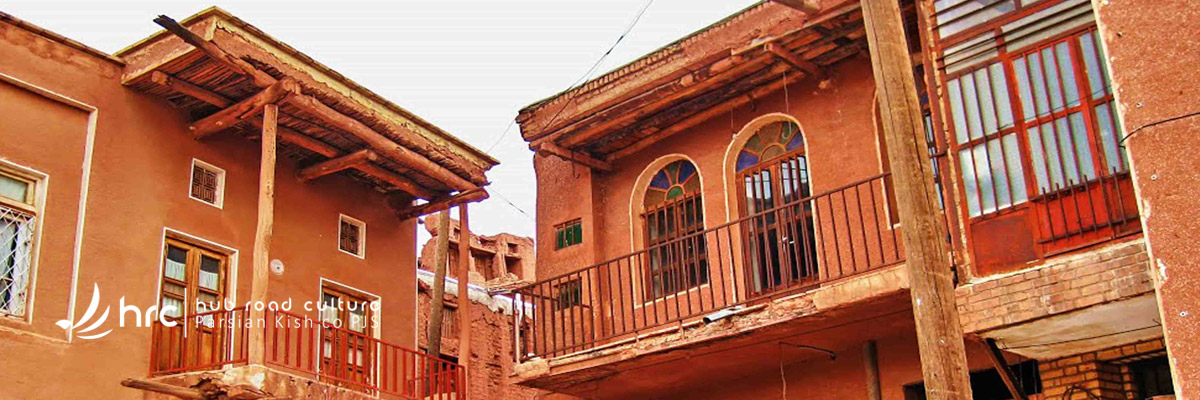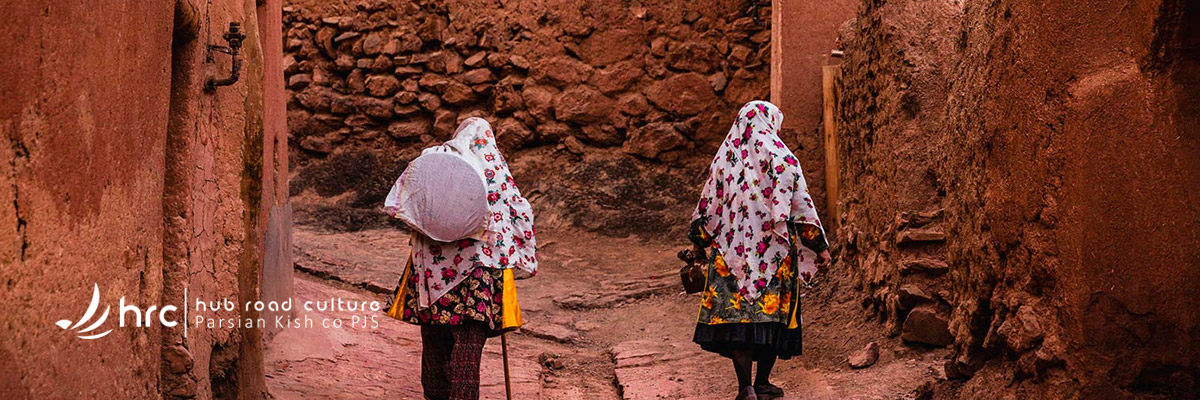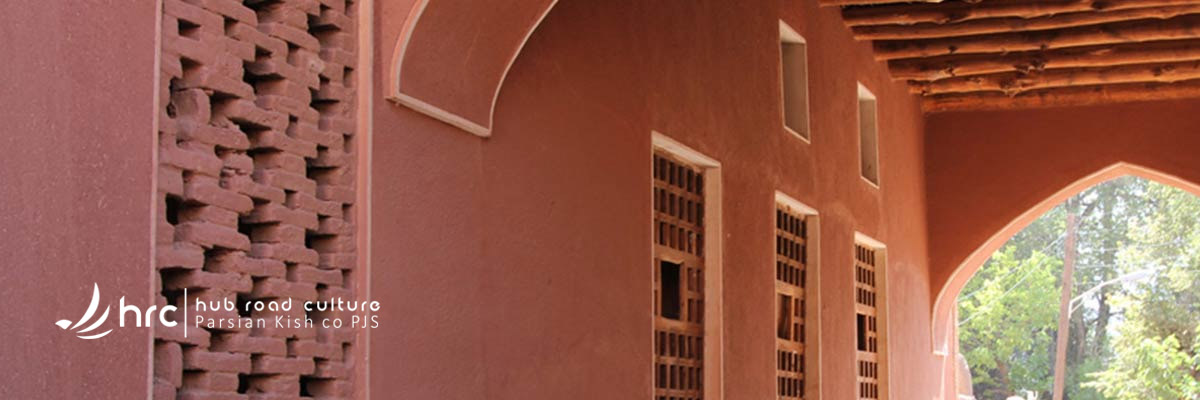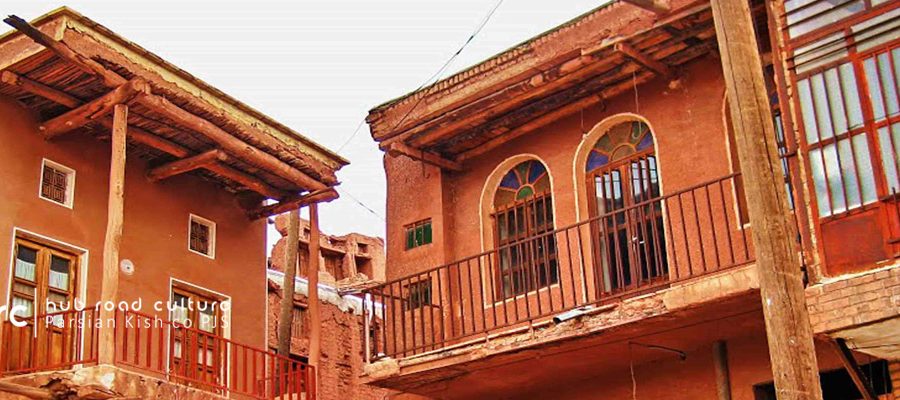Background
Abyaneh is undoubtedly one of the most unique destinations in Iran which definitely amazes each visitor. This ancient village, (2000-year old) which has largely preserved its culture, language, architecture, costume and traditional rituals over the years, is famous mostly due to its rare unique characteristics;
Abyaneh (derived from the word “viona” meaning a willow grove) is an ancient Iranian Village located at the foot of Karkas Mountain, 70 kilometers southeast of Kashan in Isfahan province. It is, also known as the Red Village because of its red soil, due to an unusual high level of iron oxide in it.
Abyaneh is a symbole of living traditions, architectural styles and probably one of the most interesting examples of human adaptation to nature.

Situation
A 2000-years old civilization, still standing with minimum changes since then,Abyaneh village is situated in the central district of Natanz county in Isfahan province and at the foot of mount Karkas, the highest mountain of the region. The village itself is 2235 meters above the sea level and surrounded by beautiful valleys; in which, a seasonal river flow. Abyaneh is mainly watered by the River of Barzrud and has a cold climate. It enjoys numerous springs plus seven qanats creating suitable conditions for agriculture; the main products of which, are wheat, barley, potatoes and fruit such as apples, pears and apricots. On top of the village still the ruins of a Sasanid era fort, is blinking and a sheer cause for attracting many eager hearts. Any way, it is now believed that the remote location of the village and its isolation throughout history has led to preserving the most traditional local ceremonies and feasts, as well as the language and other aspects of people’s culture.
History and Culture
Long history of Abyaneh dates back to more than 2,000 years ago and been registered on Iran’s National Heritage List since 1975. It’s been known an entrance to Iranian history as the locals are deeply committed to honoring their traditions. With a very rich history dating back to Sassanid era, the ruins of a Sassanid fort yet is seen on top of this village and archeological excavations are still going on here. One of the most interesting points about Abyaneh is the culture of its local residents. Elderly people of the village still speak Middle Persian, which was originally the language of Sassanian Persia and disappeared many centuries ago. The way people dress here is also very notable; most women wear large white scarfs with printed or embroidered red flowers which covers their shoulders. They also wear colorful dresses and a special pair of pants. In winter, women add a velvet vest to their outfit. Men wear traditional clothes as well, consisting black vest and wide trousers. It’s their authentic way of dressing that normally makes them the main subject of many visitors’ photos.Another interesting point seen in Abyaneh, is the beautifully carved wooden doors of most of the houses, and their door-knockers which delicately hints to a deep cultural issue of this region. If you pay close attention to some of these spectacular doors, you’ll notice that there are a pair of door-knockers on them. One with a long shape, and one with a circular shape, each with a distinct sound. One for male users and one for female users: just to alarm if there’s a male or female knocking on the door, so a proper person would open it.

Attractions
While in the village, try not to miss visiting the most impressive building of the village, Jame Mosque. Built in eleventh century, the mosque has astonishing ancient carvings and a famous walnut-wood mihrab from Saljukian period. In addition, you can visit the castle just at the top of the village and a Zoroastrian fire temple, dating back to the Sassanid period. There are also three castles in the Village, a restaurant, a pilgrimage site and three mosques. According to an inscription, seen on the top of door of them, they date back to the early Safavid period. Inside one of these mosques, there is a beautiful nocturnal prayer hall with wooden capital pillars.
To have a better view of the village, you can walk towards one of the castles (preferably Takht-e Haman), cross the Barzrud river, and get to the hill-top. That’s where you can watch a breath-taking scenery, never forget.
Population and Language
According to the 2006 census, its population was 305, in 160 families; nearly most of whom are the older ones, since the youngs all have left the village to find their desires in a modern facilitated place. The Persian dialect of the people of Abyaneh has preserved some characteristics of the Middle Persian language, which was the language of the Sassanian Persia.

Architecture of Abyaneh
Bearing an ancient architectural style, the houses featured by the use of clay as the construction material and latticed windows and wooden doors; similar to Masouleh. The roofs of some houses are used to serve as the courtyard for other houses higher up on the slope; i.e. the village bears an stair style form.
________________________________________
When to Visit & Where from
As the village enjoys a relatively mild weather, it can be visited almost at any time of the year. However, the best time to visit Abyaneh would be during Spring and Autumn. Abyaneh village is easily accessible both from Kashan and Isfahan. It takes about 1 hour driving from Kashan and 2 hours from Isfahan to get there.

Our Offer
Reading this article, by itself robbing the hearts, can encourage every travel lover to come to Iran and especially to Abyaneh, this rare village. If so, don’t hesitate to contact us to be at your service.IRANHRC, a sophisticated tour operator with more than a decade experience, is ready to help you by a good programming. Just let us know your interests and tastes, to tailor for you one of our best packages; by which, in best way you’d be satisfied. Once trying our plan, means wishing to repeat the experience again and again!

